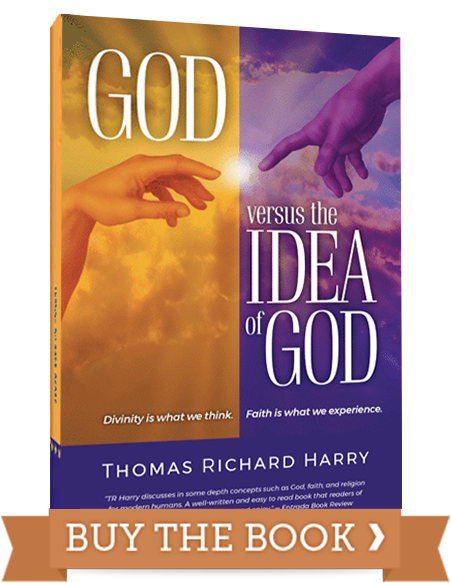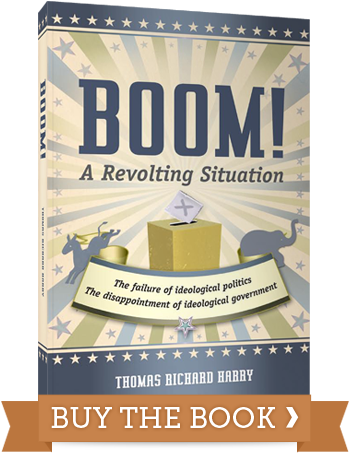The American Family Gazette
Vol. II, 1010
What would you say if I told you about sixty percent (60%) of voters currently do not have a political party that adequately represents their views of society? That translates into your having just a two-in-five chance that one of our existing political parties’ agenda is compatible with your view of how American society should look. Would you say that that is what most would call an effective representative democracy? Arguably.
Okay, here’s the situation:
Over the past fifty or so years, the American National Election Study (ANES) project has been tracking our national political profile, our political blood pressure, so to speak. Since 1972 they have asked (a sample of) voters a question regarding the intensity of their ideologies (personal value & belief system as it relates to politics): “When it comes to politics do you usually think of yourself as extremely liberal, liberal, slightly liberal, moderate or middle-of-the-road, slightly conservative, conservative, extremely conservative, or haven’t you thought much about this? Here are some interesting results of this question over the years (numbers rounded):
1. Average percentage claiming to be liberal to extremely liberal: 9% (12%)
2. Average percentage claiming to be conservative to extremely conservative: 16% (21%)
3. Average percentage claiming to be slightly liberal– moderates– slightly conservative: 47% (60%)
4. Average percentage claiming not to have thought much about it: 28% (7%)
The numbers in parenthesis integrate on an assumed basis a reasonable distribution of the raw “haven’t thought much about this” figure.
If your political inclination is liberal to very liberal, or conservative to very conservative, you most probably have a political party supporting your views. If it’s not, then a pretty solid argument can be made that you do not have. Why not? Because of ideology (which was the subject of a prior post here). You are not necessarily “disenfranchised”, but you clearly lack preferred political representation. You are, by default, forced to make your vote count by what often turns out to be a least-worse political choice, and hope for the best.
“Not so,” will say the current day political parties. “So,” I respond as vehemently. Because of the very visible attenuation of both the Democratic and Republican parties, the long running ability to fit most liberal or conservative political views within the parties—someplace— is missing today. Each party has moved farther from a so-called middle or broad ideological range to a position favoring their more extreme political ideological following. That is, they tend today to cater primarily to their more partisan supporters. In their view, this gives the voter “clear choices”. And that’s true. The problem is such generally opposing choices tend not to be what a majority of Americans would like to have: today it’s either or, or our way or the highway!
Now, this is not an issue of right or wrong, or good or bad—well, maybe good or bad. It is simply recognition that national politics has become increasingly partisan, more ideologically divided and less able to find common ground on issues and approaches to govern America. Let me extract a bit from former Republican Senator John C. Danforth’s 2006 book, Faith and Politics, in this connection. He clearly highlights the need for “a reconstitution of America’s political center.”
“Every few months [democrat] David Boren of Oklahoma asked me the same question, ‘Why don’t we start our own party?’ I never took him seriously, never believing David intended it that way. . . . That David asked the same question so often, even if his suggestion was not serious, demonstrated his concern about the state of politics at the time. In his opinion, the Democratic Party was to the Left of him, and the Republican Party was to the Right of me. The best place for American politics was in the center. . . .That was in the 1980’s and early 1990’s, before the more recent shift of the two parties even more sharply toward their polar extremes. Then, at least, there were . . . moderate Republicans in the Senate . . . and moderates such as Lloyd Benson of Texas among Senate Democrats. Now the collapse of the political center, sufficiently well along to warrant the repeated comments of David Boren fifteen years ago, has advanced to the point where it is a teetering ruin of its former strength. . . . The alternatives of Right and Left are squarely before the public. . . . And these two clearly, strongly persistently presented alternatives so dominant that they crowd out all else, raise obvious questions: Is that it? Are those the only choices? Must we be forced to select between extremes? . . . Ideologues claim that the center is mush. But real mush is where there is a lot of talk and no action. Strength results in action, and the center is where the action is. It is important to rebuild America’s political center . . .”
When the political parties decided there was no longer room for, or perhaps need for, moderate politicians within their “big-tents”, wittingly or unwittingly they encouraged an exodus of moderate supporters as well. If one is a confirmed partisan, it must be difficult to grasp that not everyone else is as well. I can only attribute much of the attenuation of the parties to this myopic view of (political) reality. But the results of two seemingly ever-widening ideologically opposed political parties on the results of government have not been good, to say the least. And this is not my conclusion alone. Just read the polls as they relate to politics, government and the perceived results of government by, apparently, the vast majority of us. In a nut-shell, this perception is: America is on the wrong track; America is headed in the wrong direction. Can it be that our political leaders aren’t listening? Not necessarily. The scary reality is more that they can’t (or won’t) really do much about it today.
The reality currently seems to be that neither major party can successfully govern the country. Look at their track records. Why not? Because their counter-part won’t allow them to! The political game currently isn’t who can best govern, but how either one can most effectively stop the other from even trying, and then go to the polls to point out their failures. That may be electorally effective, but hardly so governmentally. And I whole-heartedly agree with Senator Danforth: we need to reconstitute the political center, and try governing from there. Unfortunately, as things now stand, no “center”, or centrism as an ideology, can exist. The reality of a Left–Right political spectrum doesn’t allow for it, no matter claims to the contrary. Moderates there can be, but “centrists” from either the Democratic or Republican parties is, in my analysis, an oxymoron.
What we have today as a proxy for a center is political Independents. Lots and lots of political Independents! Independents from across the political spectrum—a plurality of America’s voters, actually. Many of these are those “slightly liberal” or “slightly conservative” voters spoken of earlier; yesterday’s political moderates within a then bigger tent. They are today’s politically homeless. Independents may “lean” toward one ideology or the other but probably don’t depend upon such inclinations under today’s conditions to reach their decision about how they will vote. And for the most part, practically, they only have two choices. Ironically, they have already indicated by their registering as an Independent that they aren’t happy with either one. But, come election times, where else can they go and still have their vote count? Presently, not to third-parties. Today, just to the Democrats or the Republicans, the very ones most shun. Now, explain to me again the concept of “representative” democracy, please. It seems to be absent for what I earlier described as up to about sixty percent (60%) of America’s voters. That’s absurd!
Doesn’t that sound like government by the minority? What happened to majority rule? Yes, we do still make our political (electoral) commitments by majority “vote.” But that’s a far cry from majority “rule.” As clear minority parties, neither the Democrats nor the Republicans can win elections without catering to and capturing much of the Independent vote. And, capturing is a pretty good description of what they attempt to do. We now all recognize this. But what we are just starting to recognize is that neither party represents, nor even claims to represent, Independents. Their claims, come election times, are to moderation and/or policies that admittedly may concern their more partisan following that worries they might actually try and govern in such a moderate manner. But to win—and winning is everything— they must capture that crucial homeless Independent vote; thus by necessity both attempt to tailor their campaigning to lure independent voters. This is strictly an electoral strategy, not a governing strategy. In the end, no matter which party wins, Independents—today’s proxy for the center— lose . . . again!
The solution to this majority-vote but minority-rule situation is a political movement that, in effect, does exactly what Ex-Senator Danforth among others preaches (He is, by the way, an ordained minister): a rebuilding of the political center. A political meeting place where moderates of either political ”leaning” can find proposed solutions and a clear agenda to address our political/governmental issues based upon decision criteria other than a strong traditional Left or Right ideological mind-set. Such a movement would be an effort to restore genuine majority-rule as opposed to simply majority-vote. Obviously, today’s political status quo would not favor such a movement. And, admittedly, it wouldn’t be a slam-dunk. Nonetheless, circumstances in today’s political arena seem highly favorable for the development of such a movement, practically as well as theoretically. It could be a relatively simple fix to any number of those seemingly intractable, unresolved issues in Washington. However, understand that simple does not always mean easy!
Thomas Richard Harry







I would argue that the US political landscape in fact lacks any balance at all. Rather than having two polar extremes, you have two parties on the conservative-end of the range, with those parties only differing in intensity.
Unlike European politics, the US lacks a political party on the left of centre, when taken in a global context (and that is even when you exclude the communist/marxist and other dysfunctional systems in some parts of the world).
For example, in Ireland (and typical of most European Union countries), we have 4 parties, two right of centre (conservative, capitalist, small government, low(ish) taxes, pay-for-it-yourself attitude) and two left of centre (liberal, socialist, big government, high taxes, state looks after you). While most of the time, the two right-of-centre parties have been the biggest (in terms of votes/representation), they would not be quite as far-right as even your Democrat party. Now, since the credit crunch, the left-wing parties are taking a bigger share of the vote.
You are right in that you lack choice in political ideologies (how can a democracy serve the vast majority of an electorate with only 2 fully-functioning political parties>), but you must take those parties and understand their place in the scheme of things by a comparison with other major (and minor) democracies across the world.